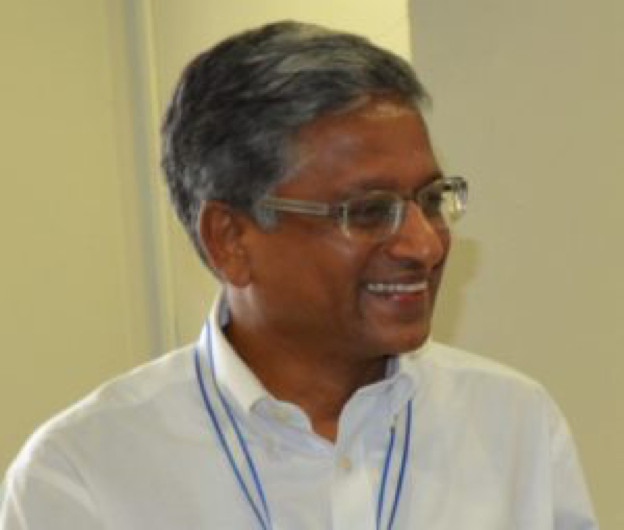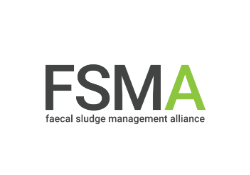New Open Access eBook: Co-treatment of Septage and Faecal Sludge in Sewage Treatment Facilities
FSMA and IWA Publishing bring you an interview with the author of “Co-treatment of Septage and Faecal Sludge in Sewage Treatment Facilities”, Dorai Narayana.
The book was published by IWA Publishing in March 2020. It includes valuable insights into how hybrid solutions to faecal sludge management can benefit cities, and cause them to be more sustainable.
“This new book from sanitation expert, Dorai Narayana, fills a much-needed gap in the literature around co-treatment and gives specific technical guidance on how it can be implemented. Given the amount of untreated sludge, the FSM Alliance felt this publication was incredibly important to be made open access. We hope that cities around the world will begin to adopt co-treatment.”
Jennifer Williams Executive Director at Faecal Sludge Management Alliance
Please see our Q&A with Dorai Narayana below!

Please could you give a summary of the key points in the book?
“The book deals with co-managing the treatment of waste sludges from on-site systems in networked sewerage systems. Cities have begun to realise the dire need to safely manage the waste sludges removed from on-site systems. While dedicated treatment facilities for this purpose have been advocated, co-treating these wastes in sewage treatment facilities is a promising option.
This option maximises the utilisation of city infrastructure and is therefore advantageous. In cases where the existing sewage treatment facilities are under-utilised, co-treatment presents a ready solution for managing faecal sludge and septage.
However, among planners and practitioners, there is doubt and uncertainty regarding the technical advisability, and potential risks of co-treating faecal sludge or septage in sewage treatment plants. As a result, the opportunity to better utilise available infrastructure for co-treatment of sludge is often being missed.
This book explores some of the basic principles behind sewage treatment, and how it may be impacted by waste sludges from on-site containments, to try to throw some light on how co-treatment could be considered, in an incremental manner, recognising risks and mitigating them.
However, this is not a design manual. It is meant as a guide for planners to evaluate and consider the option of co-treatment. If the book encourages more planners and designers to consider co-treatment, in a confident manner, evaluating risks and opportunities, and adopt the option successfully, it would have met its objective.”
What did you most enjoy about the research for the book?
“Since 2015, I have worked in the Sanitation and Faecal Sludge management sector, particularly in the Indian sub-continent and Indonesia. I had the opportunity to interact with professionals and practitioners from various cities. A large number of them travelled to Malaysia on exposure cum study visits, and the sites visited included co-treatment facilities which had been operating successfully in Malaysia for years.
The potential of co-treatment was right in front of them as a promising opportunity. Yet, there was much reluctance and apprehension. The guides and literature available were insufficient to give sufficient guidance and confidence.
The need was obvious, and in my conversations with those I interacted with, this fact was often lamented.
I started reviewing available literature. I had already been reviewing the FSM Design Guidebook by Kevin Tayler, an excellent publication, which gave me a great start. The book was a great source and reference. There were other publications (some of which were in draft stage) and these were useful references too. Reviewing these gave me valuable opportunities to have discussions and conversations with those already working on the subject. All these were learning experiences.
I must mention the enthusiastic encouragement I received from several experts, particularly from people in the Bill and Melinda Gates Foundation.
And once I had a draft, there were a number of technical experts and practitioners who so kindly agreed to review the draft and provide feedback and critical reviews. Discussions and interactions with these reviewers were an invaluable learning experience.
Most of the reviews and feedback indicated that the book had fulfilled a void and provided a necessary reference for practitioners. This was a most satisfying outcome.”
Who would it be especially relevant to?
“Sanitation planners in cities where there is existing sewerage infrastructure, which is a potential for treatment of faecal sludge would be the primary group who would find this book most relevant.
Cities which are planning sewerage infrastructure would be able to explore the potential of a hybrid solution, integrating on-site systems and FSM into the sewered systems being planned.
Planners and designers of sewage treatment plants intending to co-manage septage or faecal sludge would find the book useful as a guide in this respect.”
You can freely download the title here.
This article is a result of the collaboration between IWA Publishing and FSMA.

